Hijab Surveillance Camera Network To Widen
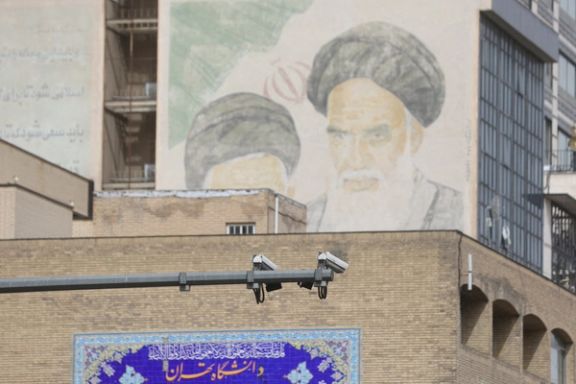
The number of police surveillance cameras will be increased to crack down on the droves of women refusing to wear hijab.

The number of police surveillance cameras will be increased to crack down on the droves of women refusing to wear hijab.
Iran's police chief, Ahmad-Reza Radan, said Thursday that President Ebrahim Raisi has approved the necessary funds to install more cameras to continue the war against hijab rebellion.
“Four special task groups have been launched to tackle the hijab norm breaking. For instance, one of them is active on virtual space to identify those who remove hijab on social media.”
Last week, Radan threatened government offices that do not deny services to unveiled women with repercussions as part of ongoing hijab enforcement.
He also vowed that police will be surveilling Caspian Sea beaches in Mazandaran and Gilan provinces with special patrols and electronic surveillance to prevent violation of hijab laws.
Threats against unveiled women have increased with the arrival of summer which has always been a season for women to ignore the strict government dress code.
In July 2022, after weeks of harsher measures on the streets, President Ebrahim Raisi ordered all government entities to strictly implement a “chastity and hijab” law.
Not long after, the death of the 22-year-old Mahsa Amini in the custody of morality police fueled protests that spread throughout the country and have continued since September.
Since March hardliners have tried to put an end to women’s increasing defiance of the compulsory hijab and to reclaim the lost ground but to no avail.

Afghan immigrants have been warned of deportation if caught flouting Iran's mandatory hijab laws.
Ali Akbar Zarei, the Director General of Foreign Nationals and Immigrant Affairs of Qom Province warned offenders will be stripped of "all social services" under a new enforcement program.
Speaking on the sidelines of a conference titled "Hijab of Afghan Immigrants" Zarei told Iran's state TV: “If they do not observe the hijab, it may lead to their deportation."
He also criticized the "inappropriate appearance" of young Afghan children in his speech at the conference.
"The sanctity of the holy city of Qom must be preserved by respecting hijab, and in case of non-compliance, legal means will be used."
During the nationwide protests in Iran last year some deported Afghans said the Iranian government had arrested dozens of their fellow countrymen on charges of participating in anti-regime protests.
Meanwhile, local officials of the Taliban in Herat told Radio Azadi, the Afghan Service of Radio Free Europe, that with the beginning of the protests in Iran, expelling Afghan immigrants from this country increased by 25%.
On October 13, Amnesty International reported that two Afghan teenagers were killed by the Iranian security forces.
On the other hand, the Wall Street Journal quoted some UN officials in December as saying that about 360,000 Afghan nationals were expelled from Iran after the Taliban came to power.
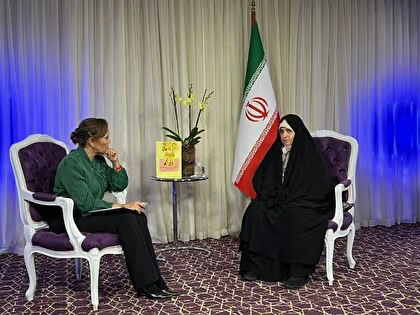
The wife of President Ebrahim Raisi says it is an example of violence when women study and work like men.
In an interview with Venezuelan state TV, Jamileh Alamolhoda claimed that governments abuse women sexually or at the workplace in the name of freedom.
Alamolhoda, who is accompanying President Ebrahim Raisi on a tour of Latin America, made the remarks on Venezuela’s teleSUR TV as the first lady of Iran Tuesday night.
She claimed that women's rights organizations mostly focus on domestic violence while “the organized violence outside the family is much more important”.
"We want women to remain women. Why should we be like men? Why should we study, work or live like men? This is a form of violence," she said.
In response to a question about the state murder of Mahsa Amini, she alleged the world's attention to the death of the 22-year-old girl was a “fake media hype".
Iranian security forces have killed over 500 civilians, injured thousands and arrested 22,000 since September when anti-government protests began. One of the main slogans of the demonstrators was “Death to the Dictator (Khamenei)”.
"Unfortunately, by calling (Ali Khamenei) a dictator, they used a fake victory to disrespect our spiritual father and the leader of our revolution," the first lady claimed.
"He [Khamenei] has shown kindness and love to everyone, but the media called him a dictator."
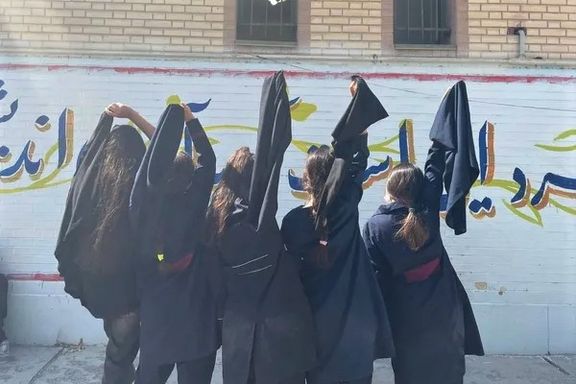
During exams in Iran, school students were given questionnaires to probe religious, political and social beliefs.
Among the questions, one asks if people must obey the decisions by the government. The students had five options as “strongly agree, agree, no idea, disagree, and strongly disagree.”
“I am happy about living under the Islamic Republic in Iran”, “I have to obey all the rules although I might not agree with some of them” are among the other questions.The questionnaire also asked if they enjoy the “peace and safety” in Iran.
It is not clear what organization has conducted the probe, but the type of questions suggests the intelligence institutes are involved.
Following the death in custody of Mahsa Amini, schools were the hub of daily protests against the regime with teenagers and even elementary school students chanting slogans.
The chemical attacks on schools raised eyebrows among many Iranians with countless ordinary citizens being suspicious of the regime’s involvement. However, the regime denied responsibility and even staged arrests of suspects after protests against the poisonings.
International reaction has demanded answers to the mystery poisonings including a spokesperson for the UN Human Rights Council in Geneva calling for a transparent investigation along with the White House, which demanded accountability for those responsible.
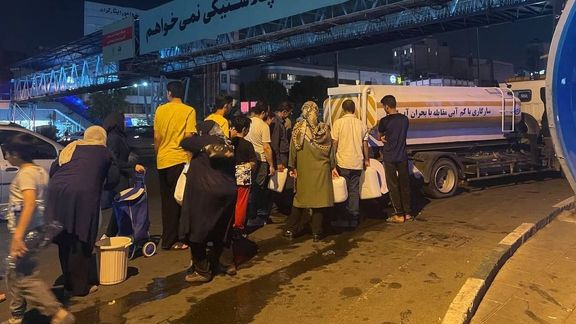
Officials including minister Ali-Akbar Mehrabian on Wednesday claimed that outage of drinking water in Tehran has completely ended but evidence indicates otherwise.
Mehrabian said that water treatment facilities have resumed operations since Tuesday evening and are working at full capacity. “We are trying to raise the water pressure back to the normal level gradually,” he said. But videos on social media showed tankers distributing water to residents on Wednesday.
Drinking water outage which started in some districts of the capital Tehran Friday has impacted not only households but also many businesses, particularly restaurants. Beside regular household use, the outage has disrupted the use of cooling systems in houses when often near 40 degrees Celsius during the day at this time of the year.
Videos sent to Iran International TV by citizens indicate that outage or low pressure has continued in some of the areas of the capital. They also say water tankers are still distributing water in various neighborhoods.
Reports from Tehran also indicate that bottled water has vanished from shelves in some areas of the capital and the price has gone up too.
The water outage started when torrential rains flooded rivers and caused extensive landslides in various areas of the country including around the capital where riverbeds were completely blocked by debris from the mountains.
Karaj, the capital of Alborz Province, which is a city of over 1.6 million only about 40 kilometers (25 miles) to the west of Tehran has also been affected by the outage.
Some citizen reports on social media indicate that the outage has continued in some areas of the city despite officials’ claims that it ended at midday Monday.
Many citizens have expressed anger on social media over lack of accountability by the water supply network officials who did not provide timely warnings to citizens and repeatedly claimed the outage would end within hours.
Water shortage has been threatening the Iranian capital of 10m for years. Causes include drought and the massive waste of water due to the dilapidation of the distribution infrastructures.
Iran has been suffering from drought for at least a decade and officials have been warning of a further decrease in precipitation. The volume of water in the five dams that supply Tehran, for instance, has consistently been going down in recent years.

Mohammadreza Bakhtiari, the former CEO of Tehran Water and Sewerage Company, said in early April that about 20 percent of drinking water in Tehran, as much as 300,000 cubic meters, goes to waste before reaching households and businesses.
In recent years, massive protests have occurred in several cities against government mismanagement of water resources, harmful dam building, and politically motivated diversion of rivers that have devastated agriculture and drinking water sources in many areas.
In July 2021, water protests erupted in several cities in the oil-rich Khuzestan province that ended with the forceful intervention of police and the Revolutionary Guards. More than ten people were killed and hundreds detained during the protests that lasted a week.
In November of the same year, thousands protested in Esfahan over lack of water for agriculture where the iconic Zayandeh-Roud river has turned into a dry bed over the past few years. The protests soon turned into anti-government unrest.

Iran says it is not following China’s model of internet access but in reality is inching towards a similar national network.
Minister of Information and Communications Technology Eisa Zarepour claimed Tuesday that modeling China is on the agenda but admitted that the ministry is not the main decision-making body in this regard.
China has its own local platforms and has done a special job on that,but Iran has its own development model, he said, adding: “Of course we are looking for cooperation and synergy with all countries, including China.”
Describing the internet in China as “not very favorable,” he noted that 95 percent of internet traffic in China is domestic. “The government does not intend to implement such a plan in Iran,” he said, quipping that the Islamic Republic’s cabinet members who had travelled there were surprised by the limitations by the lack of access to foreign websites.
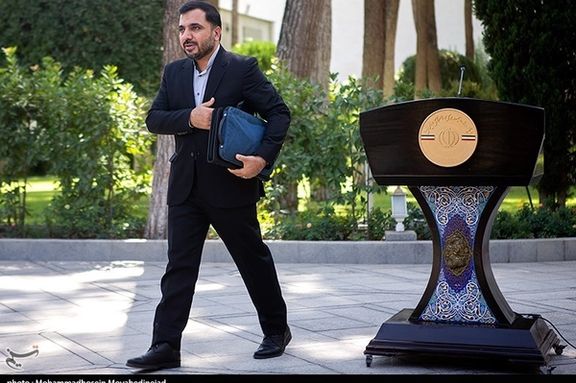
Zarepour’s remarks seem contradictory to earlier ones by the regime officials who have always envied the control that Beijing enjoys over the nation’s access to information.
Not all the Internet is available in China as sites belonging to Google, Facebook, Wikipedia companies as well as hundreds of other websites, apps, and video games, are censored or blocked, prompting people to use VPNs for access, inspiring the policy's colloquial nickname: the "Great Firewall of China." A Firewall is a network security device that monitors and filters traffic based on previously established policies.
Second only to China, Iran is on top of the list of countries that have put restrictions on the access of the internet to their people. There are also reports that the regime has started devising plans to give unrestricted internet access to authorities and a cherrypicked list of elites as well as foreign tourists, all of which have uncanny similarities to strategies taken by China.
Earlier in the year, President Ebrahim Raisi ordered the communications ministry to increase the ratio of domestic traffic, so that about 70 percent of the country's total Internet traffic would be from the Iranian national network within the next five years. It means only 30 percent of the online traffic in Iran can be used to access the global Internet.
Last week, Hossein Jalali, a member of the Cultural Committee of the Iranian parliament, urged the government to follow the example of China in setting up a national internet to prevent hackers from infiltrating the country’s infrastructural and governmental portals after major hacks have led to disastrous leaks of troves of confidential data.
Last year, Ali Yazdikhah, another MP, praised China’s “unique” experiences in this field and called for using such experiences in the establishment of a national internet – technically an intranet. The former head of Iran’s state broadcaster, Abdol-Ali Ali-Asgari, has also called for a national internet, famously saying that China has reduced the “American Internet” in the country and that Iran should have its own Internet.

Hundreds of Iran's government websites have been attacked in recent years by hacktivist groups or groups affiliated with other countries. The cyberattacks hiked particularly since last September, when “Women, Life, Liberty” protests engulfed the country after the death of 22-year-old Mahsa Amini in police custody.
In the most recent case, the hacktivist group ‘Uprising till Overthrow' claimed on May 29 that it breached 120 servers at the presidential office, about a month after the group breached into the Islamic Republic’s foreign ministry servers, disabling 210 sites and online services. Troves of confidential data have been leaked following the hacks.
The Iranian communications minister – who was sanctioned by the US for his role in limiting internet as part of the crackdown on popular protests -- also stated that the country’s Supreme Council of Cyberspace is in charge of decisions about the Internet access across Iran, highlighting that his ministry is only one the 27 members of this council.
Describing people's concerns about free access to the Internet as a result of the efforts by the "enemies," Zarepour claimed that no one wants to shut down or limit the Internet in the Islamic Republic.
In April, Zarepour himself said that considering the current situation, he is not in favor of unblocking social media platforms such as Telegram, WhatsApp, and Instagram. Playing down the impact of deliberate government internet outages in 2022 on businesses, Zarepoursaid in March that there is no accurate data regarding the damage from internet access restrictions despite reports of about $770 million in losses.